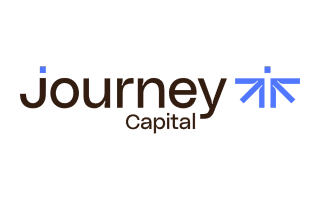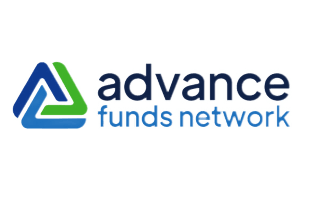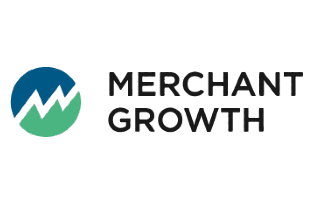Promoted for
Fast Financing

Yes. Sole proprietors can use business loans to start a new business, purchase or expand an existing business, meet a sudden increase in demand or buy new equipment and inventory. However, lenders are sometimes hesitant to give business loans to sole proprietors because of the risks involved, which include smaller revenues and the possibility that sole proprietors may become unwilling or unable to continue operating their businesses.
Promoted for
Fast Financing

Promoted for
Term Loans

Promoted for
Flexible Loans

To make comparing even easier, we came up with the Finder Score. Interest rates, fees and features across 10+ business loans are all weighted and scaled to produce a score out of 10. The higher the score the better the loan—simple.
Lenders often view sole proprietorships as risky investments, because sole proprietors have very little separation between their business and personal finances. If a sole proprietor loses an important contract, gets sick or can’t continue their business for some reason, lenders could easily go unpaid.
Sole proprietorships also often have lower annual revenues than larger enterprises, which means many small businesses may struggle to meet lenders’ minimum lending requirements to qualify for a loan. While getting a business loan may be a bit trickier, you still have multiple loan options including overdrafts, lines of credit and invoice financing.
Consider your business’s needs, financial position and the purpose of the funds when evaluating your options. Don’t be afraid to reach out to experts or other successful business owners in your industry for advice on using financial leverage to help your business succeed.
| Loan type | Typical amounts | How it works | Pros and Cons |
|---|---|---|---|
Canada Small Business Financing Program (CSBFP) | Up to $1,150,000 | You can apply for these loans through a chartered bank, credit union or a caisse populaire. They are at least 75% backed by the Government of Canada. Your business must make under $10 million in revenue annually to be eligible for this program. You’ll need to use the loan funds for a certain purpose and be a for-profit business. Although these loans are government-backed, the approval decision ultimately lies with your financial institution. |
|
Personal loan | $1,000–$35,000 | A personal loan can be used for business expenses. While borrowing amounts are much lower than other types of financing and interest rates are high, you’ll find approval easier as a self-employed business owner. |
|
Invoice financing | Up to 80% of the invoice amount | Invoice financing gives you an advance on any unpaid invoices. Costs are typically a percentage of the invoiced amount, and you’re expected to pay the advance back quickly after your invoice is due. |
|
Business line of credit | $5,000–$100,000 | A line of credit allows you to draw from your credit limit whenever you need, and you only pay interest on the money you actually borrow. |
|
Term loan | $1,000–$1,250,000 | A term loan allows you to borrow a single lump sum and pay it back over a specified term. You can usually borrow anywhere from $1,000 up to $1.25 million over the course of 3 months to seven years. Your business will need to meet minimum annual revenue and time in business requirements. |
|
Business overdraft | Several hundred dollars up to $10,000 | A business overdraft is a revolving line of credit linked to your business chequing account. Typically, you don’t have to provide collateral or any form of security to get approval, and you only pay interest charges (plus a fee) on amounts you actually use. So, if you don’t dip into the funds, you don’t have to make payments. |
|
Not all of your capital has to come in the form of loans. Although a sole proprietor won’t be able to sell stock like a corporation, you can still receive capital from other sources.
The length of time your business has been operating and its annual revenue will help narrow down your options. Startups will have different needs than businesses that have been running for years. The more you know about your business plans, expenses and cash flow, the better equipped you’ll be to get the right loan.
If you’re starting a new venture, you’ll face some challenges when looking for financing – most small business lenders won’t lend to businesses that have been operating for less than a year. Instead, you may need to consider startup financing. You’ll need the following to apply for a loan:
It’ll be challenging to get a bank loan if you’re a startup and can’t provide all the required documentation. You might want to consider getting a personal loan, a secured business loan (which requires collateral) or a loan from an online lender instead. Online lenders often have less stringent requirements for business loans compared to banks, but you’ll still need to meet minimum requirements for annual revenue and time in business.
No-paperwork business loans from online lenders
Sarah is a self-employed landscaper who designs boutique gardens for wealthy homeowners and small businesses across Toronto. She hires landscapers on a project-by-project basis, but recently, a large hotel chain has contracted her to design and build a courtyard garden. This is a much bigger job than her usual projects and she realizes she needs $60,000 to hire more labourers and rent special equipment. Sarah will need $40,000 to pay wages and $20,000 to rent machinery.
She heads to her bank and is able to get approved for a higher loan amount with competitive terms since she has been in business for a long time and has strong personal credit.
| Cost of labour/machinery | $60,000.00 |
| Loan type | Term loan |
| Loan amount | $70,000 |
| Interest rate (APR) | 8.00% |
| Loan term | 5 years |
| Additional fees | Origination fee of 1.00% ($700.00) |
| Monthly payment | $1,419.35 |
| Total loan cost | $85,860.86 |
*The information in this example, including rates, fees and terms, is provided as a representative transaction. The actual cost of the product may vary depending on the retailer, the product specs and other factors.
Although it can be more difficult to get a business loan as a sole proprietor, you still have options. Consider your business’s needs carefully, prepare all the relevant documents and don’t be afraid to compare and contact multiple lenders to find the right loan for your needs.
Explore farm loan options in our detailed guide to loans, grants and government funding for agribusinesses.
Loans and financial assistance for Canadian businesses impacted by Trump’s tariffs.
Check out the pros and cons of five Clearco alternatives to find financing that suits your business.
Explore different business loans for cleaning services to start a new business or expand one.
See which business lenders can approve a fast business loan. Turnaround times can be as short as one day.
Compare business loans for eBay sellers and get customized financing to grow your online storefront.
Banks offer the most lucrative business loans and financing options on the market. However, getting approved can be challenging, especially if you don’t fit the bank’s traditional mold.
Learn how to get a business loan for dental practices to start or expand your business.
Learn how to secure a business loan to purchase or expand your child care centre.
Compare business loans interest rates in Canada, and find out how much business financing could cost you.